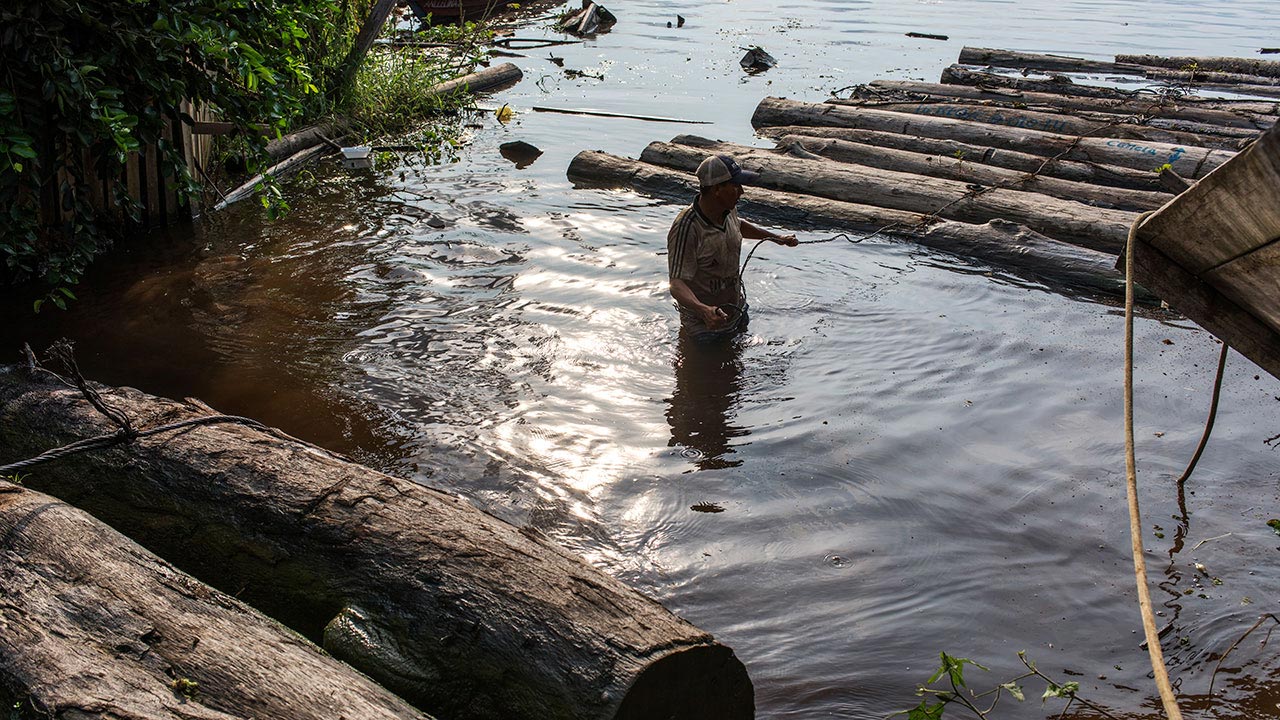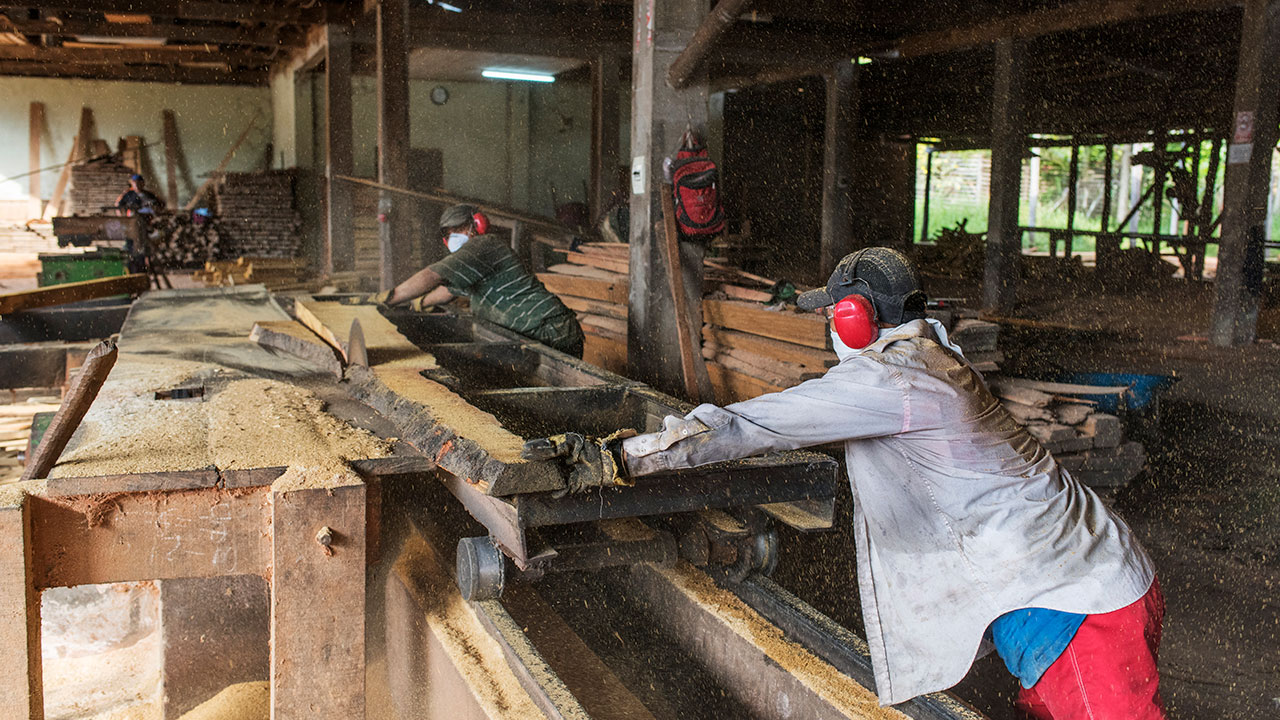
Across the Peruvian Amazon, Tetra Tech is strengthening forest governance with innovative forest control and monitoring tools, while promoting private sector engagement and indigenous participation in forest value chains.
Illegal logging in Peru can lead to widespread deforestation, threaten critical biodiversity, contribute to economic inequality, and increase greenhouse gas emissions. The U.S. Forest and Paper Industry estimates illegal logging produces up to 10 percent of global wood products, depressing global timber prices by 7 to 16 percent and costing U.S. firms at least $460 million per year.
Tetra Tech is currently implementing the Securing a Sustainable, Profitable, and Inclusive Forest Sector in Peru (Pro-Bosques) Activity, funded by the U.S Agency for International Development (USAID). The five-year project is working to strengthen Peru’s forest sector and promote sustainable forest practices, to reduce deforestation; combat illegal logging; increase indigenous participation in forest value chains; conserve biodiversity; and reduce carbon emissions. The Pro-Bosques Activity is funded to support critical components of the Forestry Annex of the Free Trade Agreement between the United States and Peru that requires effective compliance of environmental and forestry laws.
Tetra Tech is working with the Government of Peru (GOP) forest agencies, private enterprises, forest concession holders, and local indigenous communities to strengthen the monitoring and enforcement of the Peruvian forest sector and increase legal timber for international and domestic use.
The Pro-Bosques Activity also is strengthening Peruvian forest governance through forest control and monitoring tools. The tools primarily include the development, implementation and scaling-up of the Control Module of the National Forest and Wildlife Information System (MC-SNIFFS), an information system administered by the National Forest Authority. This enables the verification of the legal origin of timber and tracks its movement from forest to market. Tetra Tech provides technical assistance and training programs to GOP forest agencies, regional Peruvian authorities, forest enterprises and concession holders, and participating indigenous communities to fully implement the MC-SNIFFS in all regions of the Peruvian Amazon.
Tetra Tech is catalyzing private sector investments in the Peruvian forest sector to connect local enterprises to domestic and international markets and improve their access to financing. The Pro-Bosques Activity provides technical assistance to help forest title holders, indigenous community-based forest enterprises, local sawmills, and exporters improve forest management plans, reduce waste, develop new products, and enter new markets.
Tetra Tech also promotes the inclusive participation of vulnerable populations throughout forest value chains, with a particular emphasis on local indigenous communities. Nearly 20 percent of forests in the Peruvian Amazon are found within legitimate and acknowledged native community territories. We are helping develop plans to improve incomes from forest-based livelihoods, scale-up and expand community control of forest resource rights, and strengthen oversight.
Over the life of the project, the Pro-Bosques Activity, in partnership with GOP forest authorities, expects to improve natural resources management on millions of hectares of forest in the Peruvian Amazon. This will result in the reduction, sequestering, or avoidance of millions of tons of greenhouse gas emissions. Pro-Bosques will also strengthen the capacity of nine key public institutions involved in the management of Peruvian forest resources. Finally, the Activity expects to leverage approximately $9 million in private sector investments in the Peruvian forest sector.
